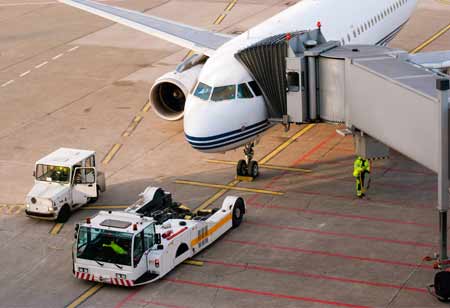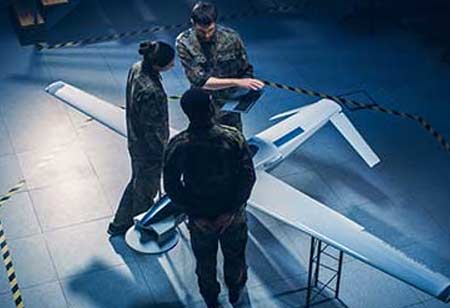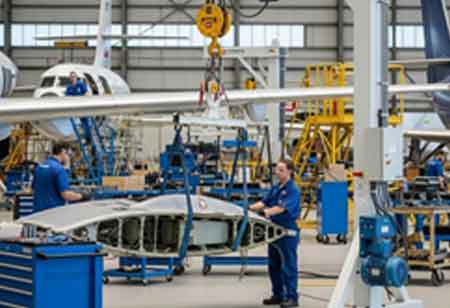Military-grade Ground Support Equipment (GSE) plays a vital role in modern military operations' functionality, safety, and effectiveness across air, land, and naval platforms. The systems ensure mission readiness, streamline maintenance, and support logistical and tactical operations in peacetime and combat scenarios. From aircraft towing and weapon loading systems to ruggedized power supply units and mobile shelters, the demand for advanced GSE continues to expand globally. The growing need for rapid deployment, modernization of armed forces, and integration of intelligent technologies is transforming this niche manufacturing domain into a high-stakes sector.
Manufacturers of military-grade GSE must meet rigorous defense standards and innovate with evolving battlefield requirements and digital trends. Geopolitical instability and the emergence of multi-domain warfare strategies have also increased demand for expeditionary and mobile GSE units. The units must be easily transportable, quickly deployable, and compatible with strategic airlift capabilities. Manufacturers now prioritize compact designs, lightweight materials, and systems that can be assembled or deployed rapidly in forward operating bases or remote environments.
AI Integration and Technology Advancements
Global increases in defense budgets and the Middle East are prompting the modernization of aging support infrastructure. Military forces require robust, modular, and multi-functional ground support systems operating in diverse terrains, climates, and mission contexts. Environmental sustainability is another key factor. Modern militaries emphasize reducing their carbon footprint by using electric-powered GSE, hybrid energy systems, and reduced-emission machinery. Manufacturers are responding with electric tow tractors, solar-powered generators, and fuel-efficient HVAC systems tailored for battlefield logistics and aviation support.
AI enables predictive maintenance, fault detection, and real-time monitoring of ground support assets. AI-driven automation is also used in autonomous GSE systems such as self-driving aircraft tow tractors, robotic load handling systems, and automated refueling units. These machines can operate with minimal human input in hazardous or high-traffic environments, enhancing safety and efficiency. AI-based route optimization algorithms allow towing and cargo units to move across bases with optimized pathing, minimizing congestion and risk. AR systems enable technicians to view overlayed guidance while performing repairs, speeding up processes and reducing errors.
Digital twins, virtual replicas of physical equipment, allow simulation and remote diagnostics of ground support systems, providing valuable foresight for technicians and planners. Advanced materials such as high-strength composites, lightweight alloys, and corrosion-resistant coatings are also incorporated into GSE production to meet weight, durability, and environmental exposure demands. Material innovation is critical in safety and performance in aerospace-specific GSE, such as aircraft jacks, loaders, and test stands.
Applications Across Military Operations and Sectoral Relevance
In the air force domain, GSE is indispensable for aircraft maintenance, ground handling, loading, fueling, testing, and emergency response. Equipment such as bomb loaders, nitrogen carts, hydraulic test stands, and air-conditioning units must operate under extreme conditions while meeting stringent standards. Navy operations rely on customized GSE to handle shipboard aircraft, drones, and munitions.
Naval air stations, aircraft carriers, and dockyards require robust equipment resistant to salt corrosion, vibration, and compact spatial constraints. Deck-handling systems, launch and recovery equipment, and weapons elevators are just a few examples where specialized GSE ensures seamless operations at sea. Mobile GSE supports maintenance and fueling of ground vehicles, artillery systems, and communication installations. Deployable shelters with integrated power, climate control, and diagnostics stations act as mobile command and support hubs.
Special forces and rapid deployment units use air-transportable or even man-portable GSE units for mission-specific operations. Lightweight energy sources, quick-deploy antenna towers, compact repair kits, and portable UAV ground stations support autonomous and small-unit tactics, enabling agility and mission adaptability. Unmanned systems also present a growing area of application. Drones, ground robots, and autonomous vehicles require their own classes of GSE, including launch platforms, diagnostic systems, and recharging units. As drone warfare scales up, specialized GSE is becoming critical for swarming tactics and persistent aerial surveillance.
Challenges in Military-Grade GSE Manufacturing
Obsolescence is a key risk; an expensive piece of GSE might become functionally outdated if the vehicles or aircraft it supports are upgraded or replaced. Manufacturers build modular and upgradable components, enabling future-proofing through firmware updates, plug-and-play components, and scalable software. Cybersecurity is an emerging concern, as more GSE systems connect to military networks and cloud-based control interfaces. A compromised refueling system or maintenance diagnostic tool could endanger missions or leak sensitive information.
Training and workforce challenges also loom large. As GSE becomes more digitized and automated, maintenance and usage require personnel with advanced technical skills. Defense contractors and militaries must invest in reskilling programs, AR-based training, and remote support solutions to address the widening skills gap. The shift toward integrated defense logistics, where GSE, supply chains, maintenance software, and fleet management are centralized, is reshaping the role of GSE manufacturers. Offering end-to-end lifecycle services, from design and training to digital support and obsolescence management, will become essential to long-term competitiveness.
Policies promoting standardization, defense-tech innovation funding, and cross-border military partnerships will further boost adoption. Military-grade Ground Support Equipment is a silent enabler of every successful mission, providing the infrastructure, reliability, and intelligence to keep armed forces operational.









